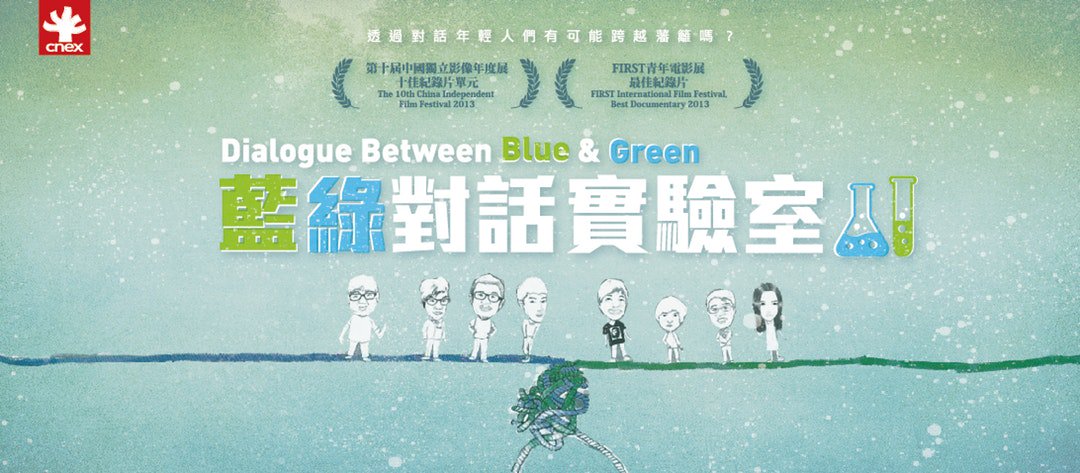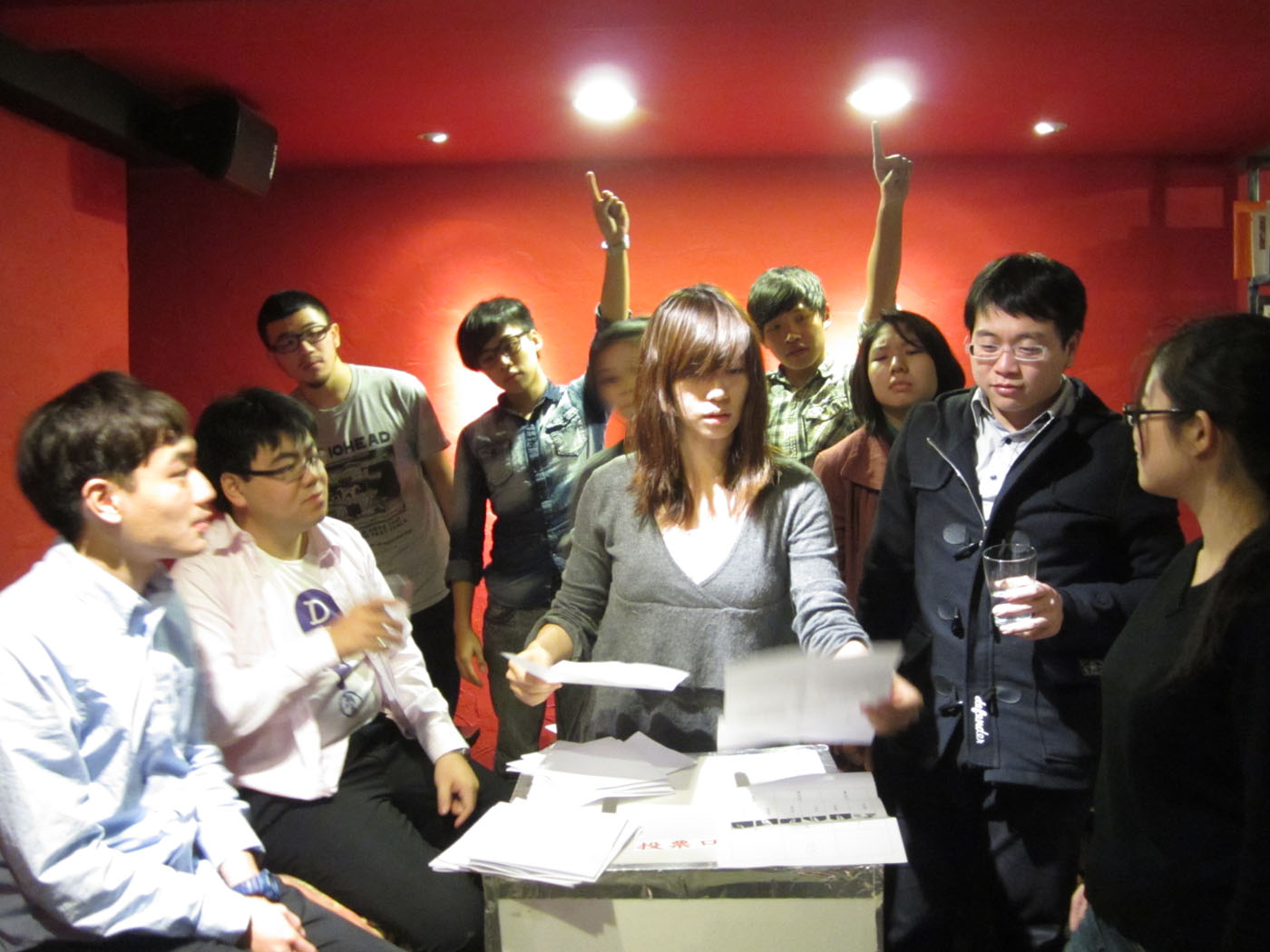
In the campaign for special municipality mayor in 1994, New Party-nominated candidate Chao Shaw-kong strategically rose the level of the election to “guarding the Republic of China.” Unscrupulously enlarging the ideological conflict between the Kuomintang (KMT, Blue) and the Democratic Progressive Party (DPP, Green), he set in Taipei City a battlefield of opposition and aggressive language. Although Chen Shui-bian won the election, the cost for Taipei City, and even Taiwan, was the endless rivalry between Blue and Green, which eventually led to political idleness. After that, the Taiwanese society split into two segments, without any overlap in between.
For two decades, in spite of the growth of civil society, which has grown tired of the quality of party politics, Taiwanese society has been trapped in stagnation and regression by the political environment and mainstream media, who regard disagreement between Blue and Green as the only standard. Under such idleness and self-consumption, Taiwan has become more and more detached from the international community. Moreover, the young generation, showing little concern about politics, tend to hide into the online world or other private spaces for an individual pursuit of superficial delight. The loss of collective memory results in the disability to comprehensively review the Taiwanese political history over seven decades. Chao, who initiated the current catastrophe, has never been censured either; nowadays, he still talks a lot on mainstream media, as if a senior political critic.
If we optimistically approach Chao’s inciting deeds, aimed for his own political interest, we may make the following interpretation: such a demonic figure was sent as a test for Taiwanese society. As the political disaster created by Chao reaches the extent of “Taiwan is doomed,” which Chao once claimed in 1994, we are tested to see if we can rescue ourselves or if we will continue to struggle in the plight of opposition until others (e.g., United States or China) wrap up our remains.
There are a number of reasons why the passionate performance of the “devil messenger” succeeded in tearing up Taiwanese society, as well as setting Blue and Green into a contradiction on the fake issue of national identity. I would say that while middle-aged and older generations are limited by their direct experience of history and the following emotional burden, DPP has snobbishly shown an overall incompetence in dealing with transitional justice. In addition, short-sighted mainstream media keeps rubbing salt in the wound for profits. These reasons have made it impossible for Taiwanese society to communicate together on the topic of Blue and Green.
While Taiwanese society is overwhelmed by the contradiction between parties and groups, few Taiwanese documentaries involve in the current topic, which is odd considering that freedom of speech has been granted. Perhaps the Huaren culture of “not speaking of public issues” has deprived the ability to master in political subjects even for record holders who could avoid political risks. As a result, in spite of the abundance of touching documentaries about private experiences, few people are willing to apply such creativity to the issue of Blue and Green or national identity. It is therefore praiseworthy for the young documentary director Fu Yue to elaborate on these topics in her finished works, as well as those in the making.
Before Fu, among documentary producers of her generation, Kuo Shu-feng discussed similar themes in Sisyphus: Formosa (2004). Growing up in a family with a pro-KMT background, Fu wondered why the disagreement between Blue and Green was so profound, and how it affected her. Thus, she shot Mirror! (2008) as her graduation production when she studied for a masters degree at the Graduate Institute of Studies in Documentary and Film Archiving, at Tainan National University of Arts. Through making films clips, she attempted to build “conversation” between two families (her parents and the parents of a pro-DPP classmate), hoping that both sides could understand how each other’s growth experience shaped their political standpoints. Fu finished the work, which was somewhat difficult to conduct, only to realise that empathy was lacking as a result of neither side letting go of their experience, so understanding and acceptance did not happen.
Fu’s passion for the issue was not ruined by the previous generation despite their emotional burden and limited horizon. Shifting focus onto the younger generation, she created a space for conversation and produced Dialogue Between Blue & Green (2012). The crew invited a group of students with different political standpoints several times over a year, to discuss issues related to parties and national identity. These youths, including a Hong Kong student, a Chinese exchange student, and representatives from both KMT and DPP, stand on different points of the ideological spectrum. Yet they communicate, debate on certain topics, and listen to opinions from others in the very same space. Unlike the older generation, which fails to form a conversation, these youths demonstrate their distinctive way of communication when facing issues such as the contradiction between Blue and Green throughout their experience in “laboratory” held for more than a year.

Fu’s “laboratory of conversation” is a brilliant design: eight to nine people talking in a narrow room, sitting close to each other. Without the open breathing space, the participants are forced to directly respond to the topics because it becomes difficult for them to subtly enter a state of concealment. Such a limited spatial arrangement allows us to observe a few common characteristics of the current Taiwanese young generation in terms of conducting political conversations. First, they have the ability and willingness to listen to each other’s arguments, and are not eager to persuade or argue. Second, bearing less of a historical burden, some of them are capable of pulling themselves away from the political standpoints of their families, and eventually build their ideological subjectivity based on their own experience and belief. Third, they are generally able to break the deadlock during the dialogue by employing self-deprecation as a resolution. Fourth, since politics has been recognised as a part of daily life for some of the youths, they are capable of confronting serious political issues with approaches featuring their lifestyle, language, and even games.
Filming such dialogue as a documentary encourages more young people to take part in political discourse in order to break the antithesis between people with different political standpoints, and thus Dialogue Between Blue & Green is precious. After starting conversations, the next challenge for Taiwanese youth would be the concern for the content and quality of dialogues. In the documentary, Taiwanese youths acknowledge, through the conversation, their ignorance and superficiality of their comprehension of historical and political issues. On the other hand, embarrassingly, the Chinese exchange student happens to be the best at tracing back the historical path of democratisation and thoroughly analyzing the current crux of the problem between Blue and Green, even though he never witnessed or appreciated democracy before becoming an exchange student. This could be another aspect of “pressure from China” that Taiwanese youths must face up to: the outstanding performance of Chinese students highlights the unenlightened status of Taiwanese youths, in which they cannot obtain a profound view of neither China nor themselves.
Following Dialogue Between Blue & Green, Fu’s undergoing documentary projects further elaborate on the current vital issue; that is, the experience and reflection of Taiwanese and Chinese young generations on social transformation, national identity, and sovereign controversy. Being in Taiwan, Being Young describes how Cai Boyi, a Chinese student studying in a Taiwanese college, is inspired by democratisation in Taiwan and thus actively participates in student and social movements. There will be a sequel to Dialogue Between Blue & Green, focusing on the subsequent stories of a student movement leader Chen Wei-ting. We look forward to these projects, because they serve not only as a potential subject matter that deserves more attention for filmmakers, but an essential realisation that contributes to the deepening progress of democracy in Taiwan.
 No products in the basket.
No products in the basket.